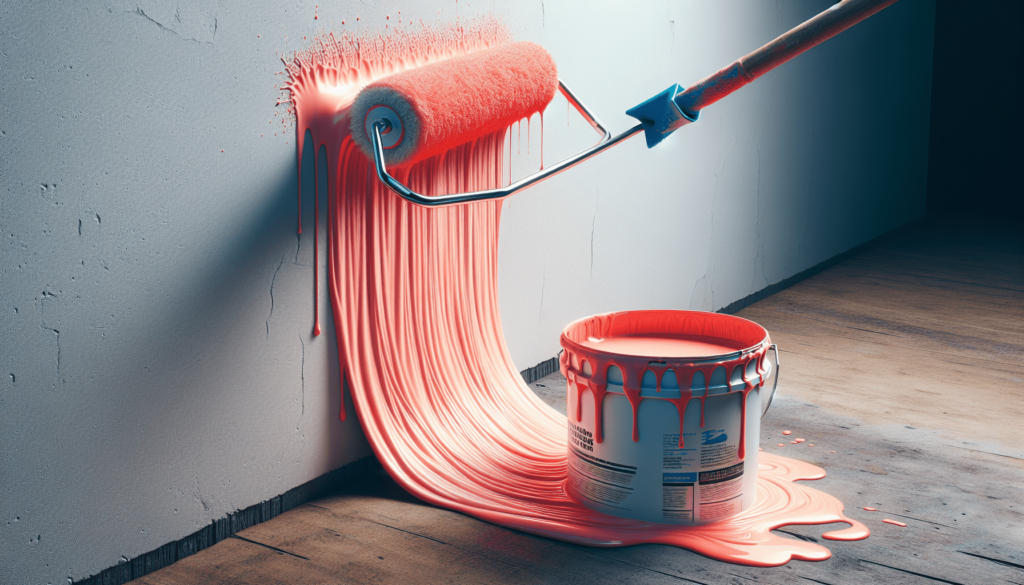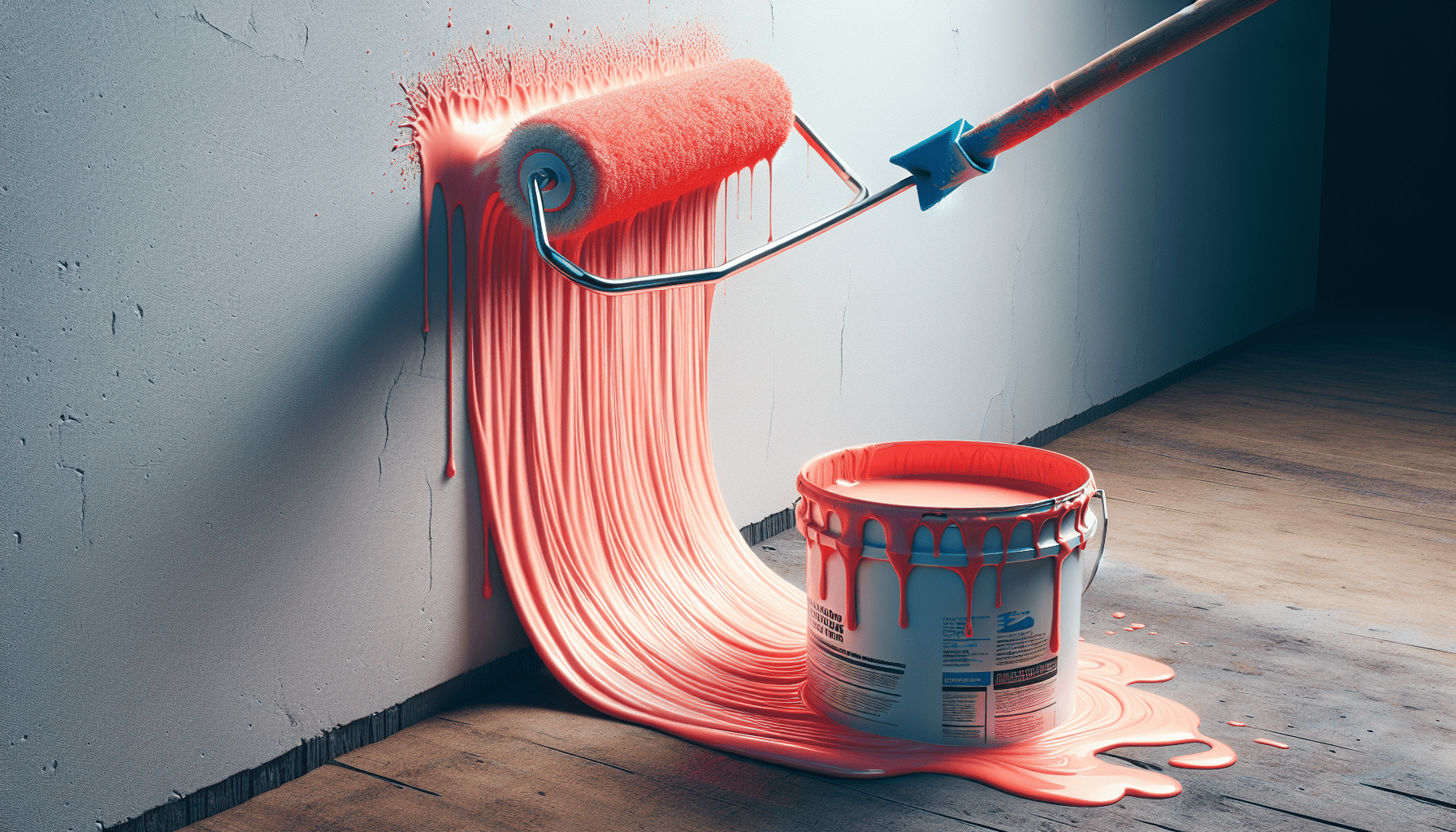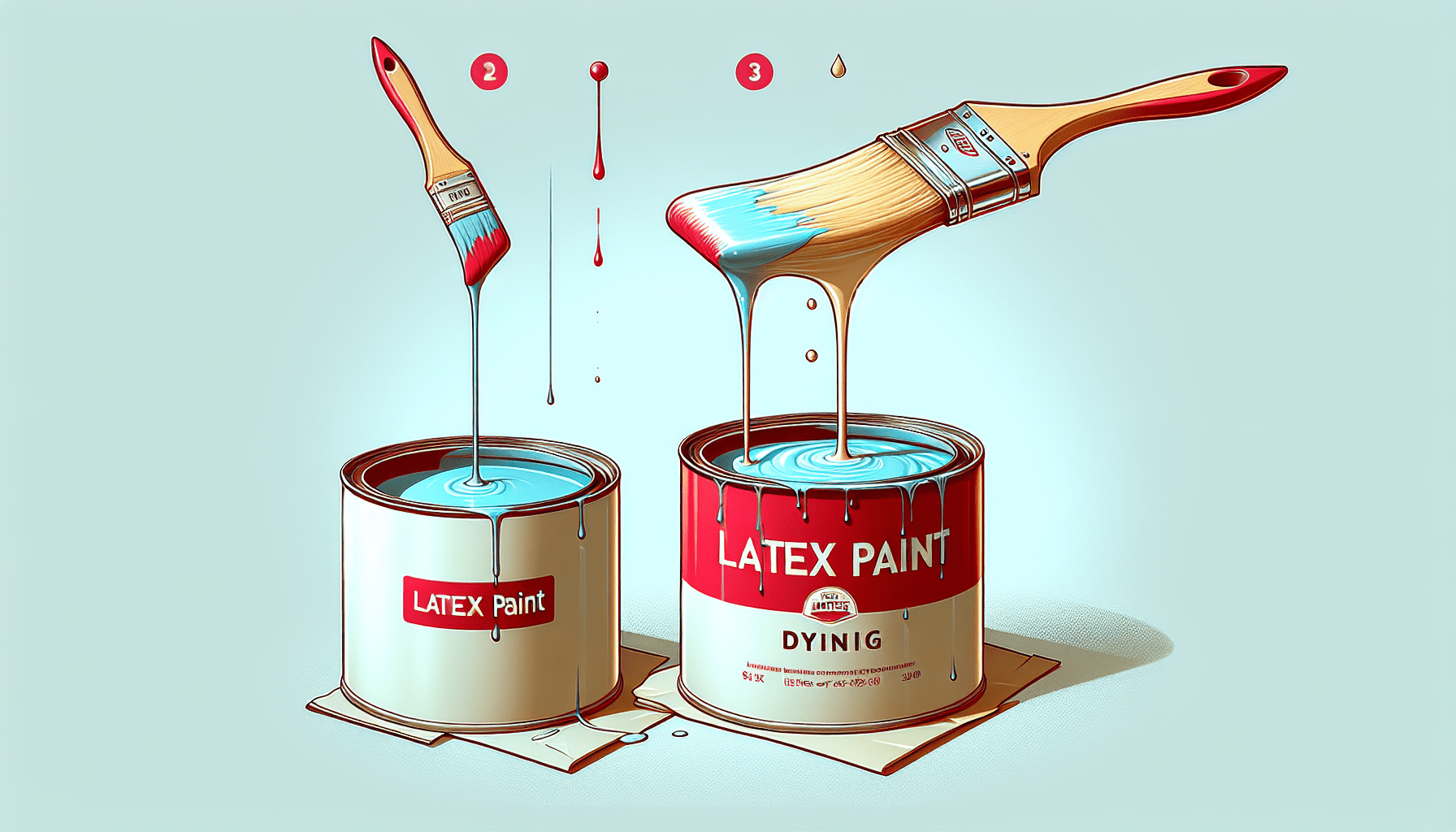In the world of painting, the question often arises: Does latex paint need primer? Whether you are a seasoned professional or a novice DIY enthusiast, understanding the role of primer in conjunction with latex paint is crucial to achieving a flawless finish. This article aims to explore the necessity of using primer before applying latex paint, highlighting its benefits and providing practical tips for ensuring long-lasting and professional-looking results. Gain insight into the world of painting as we shed light on the importance of primer in creating a smooth, durable surface for your latex paint projects.
Introduction
What is latex paint?
Latex paint, also known as acrylic paint, is a popular type of paint that is widely used for both interior and exterior applications. It is made with a water-based formula and contains acrylic resin as the binder. Latex paint is known for its durability, ease of use, and versatility, making it a preferred choice for many homeowners and professionals.
What is primer?
Primer is a preparatory coating that is applied to a surface before the application of paint. It acts as a barrier between the surface and the paint, providing several important benefits. Primers are typically formulated with special ingredients that promote adhesion, seal porous surfaces, and promote better coverage and durability of the paint topcoat. There are various types of primers available for different surfaces and paint types.
Importance of primer in paint application
Primer plays a crucial role in the successful application of latex paint. It acts as a foundation, improving the adhesion of the paint to the surface and creating a smooth and even finish. Primer also helps to seal and prepare the surface, preventing issues such as stains bleeding through, surface imperfections showing, and paint peeling or flaking over time. By using primer, you can ensure that the paint adheres properly, extends the lifespan of the paint job, and achieves a professional-looking result.
Factors to Consider
Surface condition
The condition of the surface is a key factor to consider when determining the need for primer. If the surface is in good condition, with no signs of peeling or damage, primer may not be necessary. However, if the surface is porous, uneven, or has stains or imperfections, primer becomes essential. Primer helps to seal the surface, create a uniform base, and improve the adhesion of the paint.
Type of latex paint
Different types of latex paint may have varying levels of adhesion and coverage properties. Some latex paints are self-priming, meaning they contain priming agents that eliminate the need for a separate primer. However, for optimal results, it is still advisable to use primer, especially on challenging surfaces or when transitioning from dark to light colors.
Color change
If you are changing the color of the surface drastically, primer is highly recommended. Applying a primer that is tinted closer to the desired topcoat color helps to achieve a more even and vibrant color, covering the previous color more effectively. This is particularly important when transitioning from darker to lighter colors, as it can prevent the previous color from bleeding through.
Sheen change
If you are changing the sheen level of the paint, such as going from a matte to a semi-gloss finish, primer can help create a smoother transition. Primers are designed to provide a consistent base for the paint, regardless of its sheen. This ensures that the final result is uniform, with no visible variations in sheen.

Benefits of Using Primer
Improves adhesion
One of the primary benefits of using primer is that it improves the adhesion of the paint to the surface. Primers contain special bonding agents that help the paint adhere more effectively, reducing the risk of peeling, flaking, or chipping. This is particularly important on challenging surfaces such as slick or glossy materials, as well as porous surfaces like drywall or bare wood.
Enhances paint durability
Primer helps to create a strong bond between the surface and the paint, enhancing the overall durability of the paint job. By applying primer, you can prevent the paint from being absorbed into the surface, which can lead to premature fading, cracking, or discoloration. A well-primed surface ensures that the paint retains its vibrant color, withstands wear and tear, and lasts longer.
Promotes uniform color and sheen
Using primer promotes a uniform color and sheen across the painted surface. Primer provides a consistent base, helping to mask any color variations or imperfections in the underlying surface. This is particularly important when using light or pastel colors, as any underlying stains or discolorations can show through without proper priming. Additionally, primer helps to create a smooth and even surface, ensuring that the final finish looks professional and flawless.
Increases paint coverage
Another advantage of using primer is that it increases the paint coverage. Primers are formulated to be highly pigmented, providing excellent coverage in fewer coats. By applying primer, you can reduce the number of paint coats required to achieve the desired finish. This not only saves time and effort but also helps to minimize the amount of paint needed, making it cost-effective.
When Primer is Needed
New drywall or plaster
When painting new drywall or plaster, primer is essential. These materials are highly porous and can absorb paint unevenly if not properly primed. Primer helps to seal the surface, prevent the paint from being absorbed, and create a smooth and even base for the paint. It also helps to reduce the amount of paint needed to achieve full coverage.
New wood or metal surfaces
Priming is necessary when painting new wood or metal surfaces. Wood and metal can be prone to bleeding through the paint, causing discoloration or stains. Primer creates a barrier that blocks the bleeding or staining agents, ensuring that the final paint job is free from any undesirable marks. Additionally, primer improves adhesion on these surfaces, helping the paint to bond effectively.
Stained or discolored surfaces
If the surface has stains or discoloration, using primer is recommended. Primer helps to seal the stains and prevents them from bleeding through the paint. This is particularly important when dealing with water stains, smoke stains, or dark-colored stains that can show through the paint. By using a stain-blocking primer, you can ensure that the stains are effectively concealed.
Dark color to light color transition
When transitioning from a dark color to a light color, primer becomes crucial. Darker colors have a higher chance of bleeding through the light-colored paint, resulting in an uneven or muddy appearance. Applying a tinted primer closer to the desired light color helps to create a solid base and prevent the dark color from showing through. This ensures that the final result is a true and vibrant light color.

When Primer is Not Needed
Previously painted surfaces
If the surface is already painted with latex paint and is in good condition, primer may not be necessary. Latex paint has good adhesion properties and can bond effectively to previous paint layers. However, if there are signs of flaking, peeling, or poor adhesion, it is recommended to lightly sand the surface and apply primer to ensure proper adhesion of the new paint.
Painting within the same color family
When painting within the same color family, from one shade to another, primer is usually not required. The existing paint serves as a suitable base for the new color, and the difference in shade is not significant enough to cause any issues. However, if the new color is drastically different or if the existing paint has poor adhesion, applying primer can still be beneficial.
Painting over latex paint with similar sheen
If you are painting over latex paint with a similar sheen, primer may not be needed. The existing paint provides a suitable base for the new paint, and the sheen levels are compatible. However, if the existing paint is glossy or has a different sheen than the desired topcoat, applying primer can help create a smoother and more uniform finish.
Painting small areas
For small paint touch-ups or repairs, using primer may not be necessary. Applying primer to small areas can be time-consuming and may not provide significant benefits. However, it is important to ensure that the surface is clean and properly prepared before painting, especially if there are any surface imperfections or adhesion issues.
Types of Primers
Oil-based primers
Oil-based primers are known for their excellent adhesion and stain-blocking properties. They are suitable for use on challenging surfaces such as bare wood, metal, and stained or discolored surfaces. Oil-based primers take longer to dry but provide a solid foundation for the paint, ensuring durability and long-lasting results. They are also effective in sealing porous surfaces and promoting excellent paint coverage.
Water-based primers
Water-based primers, also known as latex primers, are the most commonly used type of primers. They are easy to use, quick-drying, and low in odor. Water-based primers are suitable for a wide range of surfaces, including drywall, wood, and previously painted surfaces. They provide good adhesion, promote better coverage, and are compatible with both water-based and oil-based paints.
Shellac-based primers
Shellac-based primers, also known as alcohol-based primers, are known for their excellent stain-blocking properties. They are particularly effective at blocking stains from water, smoke, and tannins, making them ideal for use on heavily stained or problematic surfaces. Shellac-based primers dry quickly and provide excellent adhesion to various surfaces, including wood, metal, and plaster.
Bonding primers
Bonding primers are specially formulated to enhance the adhesion of paint to difficult surfaces. They provide a strong bond between the surface and the paint, ensuring excellent adhesion and durability. Bonding primers are commonly used on slick or glossy surfaces, such as laminate, tile, or glass, where adhesion can be a challenge. They are available in both water-based and oil-based formulas.

How to Choose the Right Primer
Consider the substrate
When choosing a primer, it is important to consider the type of surface or substrate you will be painting. Different primers are formulated to adhere to specific materials, such as wood, metal, drywall, or masonry. Make sure to select a primer that is specifically designed for the substrate you are working with to ensure optimal adhesion and performance.
Consider the project type
The type of project you are undertaking can also influence the choice of primer. For example, if you are painting a high-traffic area or a surface that is prone to moisture or stains, you may want to consider a primer with enhanced durability or stain-blocking properties. Similarly, if you are working on an exterior project, it is important to choose a primer that is designed to withstand outdoor conditions.
Consult with paint professionals
If you have specific concerns or requirements for your painting project, it is always beneficial to consult with paint professionals. They can provide expert advice on primer selection based on the surface condition, desired finish, and environmental factors. Paint professionals can also recommend specific primers based on their experience and knowledge of different products.
Application Tips
Surface preparation
Proper surface preparation is essential for a successful paint job. Before applying primer, make sure the surface is clean, dry, and free from any debris, dust, or loose paint. Repair any surface imperfections, such as cracks or holes, and sand the surface lightly to create a smooth and even base. It is also important to remove any grease or oil stains using appropriate cleaners to ensure good adhesion of the primer and paint.
Primer application techniques
When applying primer, follow the manufacturer’s instructions for the specific product you are using. Use a paintbrush or a roller to apply the primer evenly, covering the entire surface. Work in small sections, making sure the primer is applied in thin, even coats. Avoid over-applying the primer, as it can lead to drips or a thick build-up. Allow the primer to dry completely before proceeding with the paint application.
Drying time before painting
The drying time for primer can vary depending on the type and brand used. Typically, water-based primers dry within one to two hours, while oil-based primers may take longer, up to 24 hours. It is important to allow the primer to dry completely before applying the paint topcoat. Failure to do so can result in poor adhesion or color bleeding.
Cleaning up after priming
After priming, clean the painting tools, such as brushes or rollers, with soap and water for water-based primers or with mineral spirits for oil-based primers. Dispose of any leftover primer or empty containers in accordance with local regulations. Proper cleaning and disposal practices help to maintain the longevity and performance of your painting equipment and minimize environmental impact.

Frequently Asked Questions
Can primer be tinted?
Yes, primer can be tinted to a certain extent. Tinting primer to a color closer to the desired topcoat can help achieve better color coverage and reduce the number of paint coats required. However, excessive tinting can affect the performance of the primer, so it is advisable to consult with paint professionals for appropriate tinting ratios and recommendations.
How many coats of primer are needed?
The number of primer coats needed depends on various factors, such as the condition of the surface, the desired color or sheen, and the type of primer being used. In general, one or two coats of primer are sufficient for most applications. However, on heavily stained or porous surfaces, additional coats may be required to achieve proper coverage and adhesion.
Can primer be skipped?
While primer is not always necessary, skipping primer can compromise the quality and longevity of the paint job. Primer helps to create a strong foundation, promoting adhesion, durability, and uniformity of the paint. In certain scenarios, such as painting over new drywall or transitioning to a lighter color, skipping primer can lead to issues such as poor coverage, color bleeding, or uneven finish.
Can primer be used as a topcoat?
Primer is specifically designed to be used as a preparatory coating and is not intended for use as a topcoat. While it may provide some level of protection, primer lacks the durability and aesthetic qualities of a dedicated paint topcoat. Using primer as a topcoat can result in a finish that is susceptible to wear, fading, and staining, and may not provide the desired aesthetics and longevity.
Conclusion
The importance of primer in latex paint application
Using primer before applying latex paint is highly recommended to achieve a professional and long-lasting finish. Primers improve adhesion, enhance paint durability, promote uniform color and sheen, and increase paint coverage. They are especially important when dealing with challenging surfaces, color changes, or sheen transitions. By understanding the factors to consider, when primer is needed or not, and the types of primers available, you can make informed decisions and ensure a successful paint job.
Benefits and scenarios of using primer
The benefits of using primer in latex paint application are numerous. Primer improves the adhesion of the paint to the surface, enhances paint durability, promotes uniform color and sheen, and increases paint coverage. It is needed in scenarios such as painting new drywall or plaster, new wood or metal surfaces, stained or discolored surfaces, and dark color to light color transitions. While it may not be needed in certain situations, such as previously painted surfaces or small areas, using primer can still provide added benefits. By choosing the right primer and following proper application techniques, you can achieve a flawless and long-lasting paint finish.



